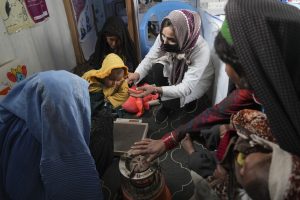In its first quarterly report released with no U.S. presence in Afghanistan, the Special Inspector General for Afghanistan Reconstruction (SIGAR) highlights the ongoing aid Washington is providing to the country. Acknowledging that its role is not to design programs or advocate for more or less aid, SIGAR provides a list of 10 “best practices” for donors and implementing agencies.
SIGAR, led since 2012 by John F. Sopko, has a unique perspective on the “what went wrong in Afghanistan” question. The organization’s regular audits and quarterly reports provide a paper trail of concerns, even if the most damning information was squirreled away into classified annexes (about which SIGAR would occasionally complain, such as in 2015 when Afghan National Security Forces data was classified after six years of being publicly available — some of the information was made available a few month later but much remained classified). More recently, SIGAR released a previously classified report that had been originally released in January 2021 about the critically unsustainability of the Afghan Air Force. Once has to wonder how the United States’ policies and plan regarding the withdrawal from Afghanistan would have progressed if that report had been public in January 2021, rather than January 2022.
The best practices included in the January 2022 quarterly report, built as they are on the foundation of hundreds of audits and reports SIGAR has compiled over the last 13 years, can be read also as a list of past reconstruction sins. While the best practices may seem like a list of obvious statements, it’s clear they need to be reiterated yet again. Maybe this time someone will take them to heart.
The first, for example, reads: “Establish a clear purpose for the aid.”
Subsequent best practices include insisting on transparency, “so we know where our money went and how it was used” and being ready to end an activity if the risk becomes too great by setting a tolerable level of risk going in. Another repeats that point: “If an activity is going poorly, make course corrections and be prepared to pull the plug.” The best practices continue with a call to keep track of the money trail and for “clear, relevant metrics.” SIGAR urges diligent evaluation of third-party monitors, necessary given the lack of a U.S. presence in Afghanistan. The final three best practices stress adapting to the evolving situation on the ground, seeking “smart opportunities to condition aid” and finally this piece of critical common sense: “Look for activities that Afghans can eventually sustain without outside support.”
In the report, SIGAR is clear about the situation at hand: “In the face of this humanitarian crisis, the international community is looking for ways to render aid. The difficulty is figuring out how to do so without enabling a repressive regime.” It’s not simple, but its not impossible.
At present, according to SIGAR, the United States “remains the single largest humanitarian aid donor to Afghanistan.” In October 2021, U.S. Secretary of State Antony Blinken announced $144 million in new aid, “bringing the total U.S. humanitarian contribution for Afghanistan and for Afghans in the region to nearly $474 million in FY 2021.” Added to this is a January 11, 2022 announcement of $308 million in aid via USAID to “directly flow through independent humanitarian organizations and help provide lifesaving protection and shelter, essential health care, winterization assistance, emergency food aid, water, sanitation, and hygiene services.”
And so, while the U.S. military has exited Afghanistan and U.S. diplomacy is complicated by non-recognition of the Taliban and the absence of U.S. diplomats on the ground, U.S. aid will continue to flow. SIGAR’s job is to watch the money.

































